Dramatis Personae

The dramatis personae of a Wayang Purwa performance are very diverse. They consist of the dalang, who is the leading artist, the niyaga, or musicians , and the pesinden, who are the woman singers. To this brief list, the wayang, the puppets themselves, can be added; from one point of view, the puppets are the real actors and actresses, even if, from another, they are but inanimate objects.
The dalang is, in fact, a most extraordinary artist. He is the key to the entire performance. A good dalang guarantees that even the most meager facilities will produce a sparkling performance with beautiful singing, excellent dialogue with a delicate literary appreciation and a nice distinction between the different grades of classical Javanese that mark social rank.
Classical Javanese is the language par excellence of Wayang Purwa, being the language in which it developed. Today, however performances are sometimes given in the national language, Indonesian, and even occasionally in English, which is the Republic’s first foreign language.
The dalang is the sole puppeteer and is the director of the entire performance, signaling to the musicians who sit behind him what to play, how to play and when to stop. The dalang “speaks” for all the puppets he uses, changing his voice and style of speaking to suit the different characters, even singing in these different voices. To quality, a dalang must be able to speak in at least 30 voices, so as to be able to play the characters of the puppets he uses. The dalang also declaims and narrates and he sings the songs called suluk, which express the mood of a given scene. He also groans, grunts, cries and shrieks in fighting sequences.
As he manipulates the puppets, the dalang makes them move and act in ways that conform with their traditional characters: gently, vigorously, aggressively, and som forth. In addition the dalang wields the wooden knockers and metal rattles that add dramatic co lour to the performance and with which he signal to the musicians. Since both his hands are often busy moving the puppets, the dalang may use his right foot to operate the knocker and rattles, making them resound against the wooden chest in which the puppets are kept. The chest is placed close beside the dalang, on his left, during a performance. In most performance today, the dalang has a helper whose function is no more than to find and hand the wayang to the dalang.
The dalang’s role occupies him for about 9 hours at a time, seated cross legged before the screen, unable to leave his mat even for a minute. A dalang must also master a considerable repertoire; it is not just one or two plays that he will know by heart, but perhaps as many as 30 or 40, or even more. Approximately thirty per cent of the content of the plays is entirely bound by tradition in both word and tone. The dalang must also be ready to slip in at the appropriate places the comments on the current situation that he hears among the people, and to add amusing details that enlighten listeners about, say, the drive for better nutrition or family planning. This is how the dalang serves as an instrument of two way communication between people and government.
The skill of the dalang, which is best displayed by his knowledge of the Javanese classics, used to be an oral tradition, handed down from father to son. For the last 60 years, however, people have been able to learn this art outside the family circle. A school for dalang was set up in the court city of Surakarta, which is also known as Solo, in 1923. Nevertheless, there are still people who learn the dalang’s art in the traditional manner, at least as a beginning.
Today, a number of women have also learnt the arts of the dalang. Among the several dozen women dalangs of today, some have won a respected position. Their numbers are still insignificant, however by comparison with an estimated total of 20,000 male dalangs. This figure includes not a few teenagers, with here and there a skilled boy amongst them.
The great majority of all these dalangs are accustomed to the puppets used for Wayang Purwa. Some are skilled with Wayang Golek, but, for a number of other kinds of wayang, such as Wayang Beber, for instance, there are only one or two, or even no dalangs alive at all, to give a performance today.
The dalang is, in fact, a most extraordinary artist. He is the key to the entire performance. A good dalang guarantees that even the most meager facilities will produce a sparkling performance with beautiful singing, excellent dialogue with a delicate literary appreciation and a nice distinction between the different grades of classical Javanese that mark social rank.
Classical Javanese is the language par excellence of Wayang Purwa, being the language in which it developed. Today, however performances are sometimes given in the national language, Indonesian, and even occasionally in English, which is the Republic’s first foreign language.
The dalang is the sole puppeteer and is the director of the entire performance, signaling to the musicians who sit behind him what to play, how to play and when to stop. The dalang “speaks” for all the puppets he uses, changing his voice and style of speaking to suit the different characters, even singing in these different voices. To quality, a dalang must be able to speak in at least 30 voices, so as to be able to play the characters of the puppets he uses. The dalang also declaims and narrates and he sings the songs called suluk, which express the mood of a given scene. He also groans, grunts, cries and shrieks in fighting sequences.
As he manipulates the puppets, the dalang makes them move and act in ways that conform with their traditional characters: gently, vigorously, aggressively, and som forth. In addition the dalang wields the wooden knockers and metal rattles that add dramatic co lour to the performance and with which he signal to the musicians. Since both his hands are often busy moving the puppets, the dalang may use his right foot to operate the knocker and rattles, making them resound against the wooden chest in which the puppets are kept. The chest is placed close beside the dalang, on his left, during a performance. In most performance today, the dalang has a helper whose function is no more than to find and hand the wayang to the dalang.
The dalang’s role occupies him for about 9 hours at a time, seated cross legged before the screen, unable to leave his mat even for a minute. A dalang must also master a considerable repertoire; it is not just one or two plays that he will know by heart, but perhaps as many as 30 or 40, or even more. Approximately thirty per cent of the content of the plays is entirely bound by tradition in both word and tone. The dalang must also be ready to slip in at the appropriate places the comments on the current situation that he hears among the people, and to add amusing details that enlighten listeners about, say, the drive for better nutrition or family planning. This is how the dalang serves as an instrument of two way communication between people and government.
The skill of the dalang, which is best displayed by his knowledge of the Javanese classics, used to be an oral tradition, handed down from father to son. For the last 60 years, however, people have been able to learn this art outside the family circle. A school for dalang was set up in the court city of Surakarta, which is also known as Solo, in 1923. Nevertheless, there are still people who learn the dalang’s art in the traditional manner, at least as a beginning.
Today, a number of women have also learnt the arts of the dalang. Among the several dozen women dalangs of today, some have won a respected position. Their numbers are still insignificant, however by comparison with an estimated total of 20,000 male dalangs. This figure includes not a few teenagers, with here and there a skilled boy amongst them.
The great majority of all these dalangs are accustomed to the puppets used for Wayang Purwa. Some are skilled with Wayang Golek, but, for a number of other kinds of wayang, such as Wayang Beber, for instance, there are only one or two, or even no dalangs alive at all, to give a performance today.


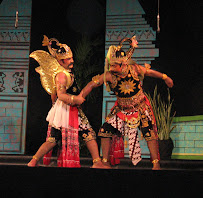



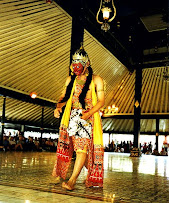


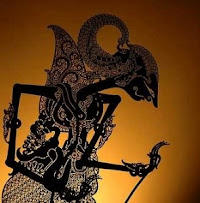




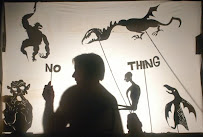
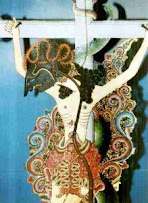






0 komentar:
Posting Komentar